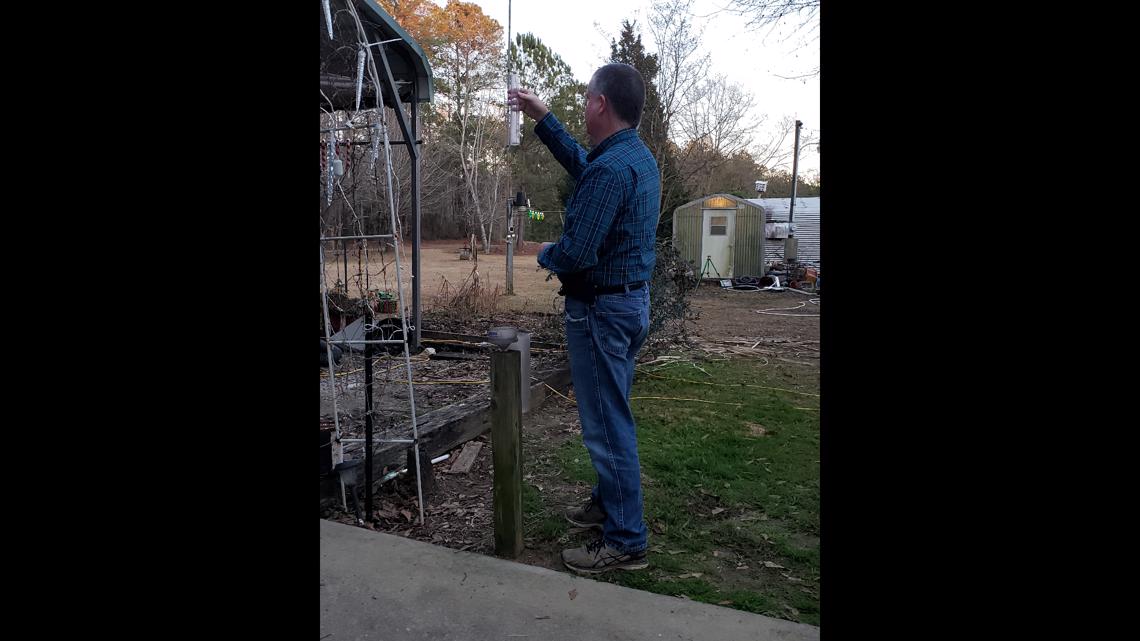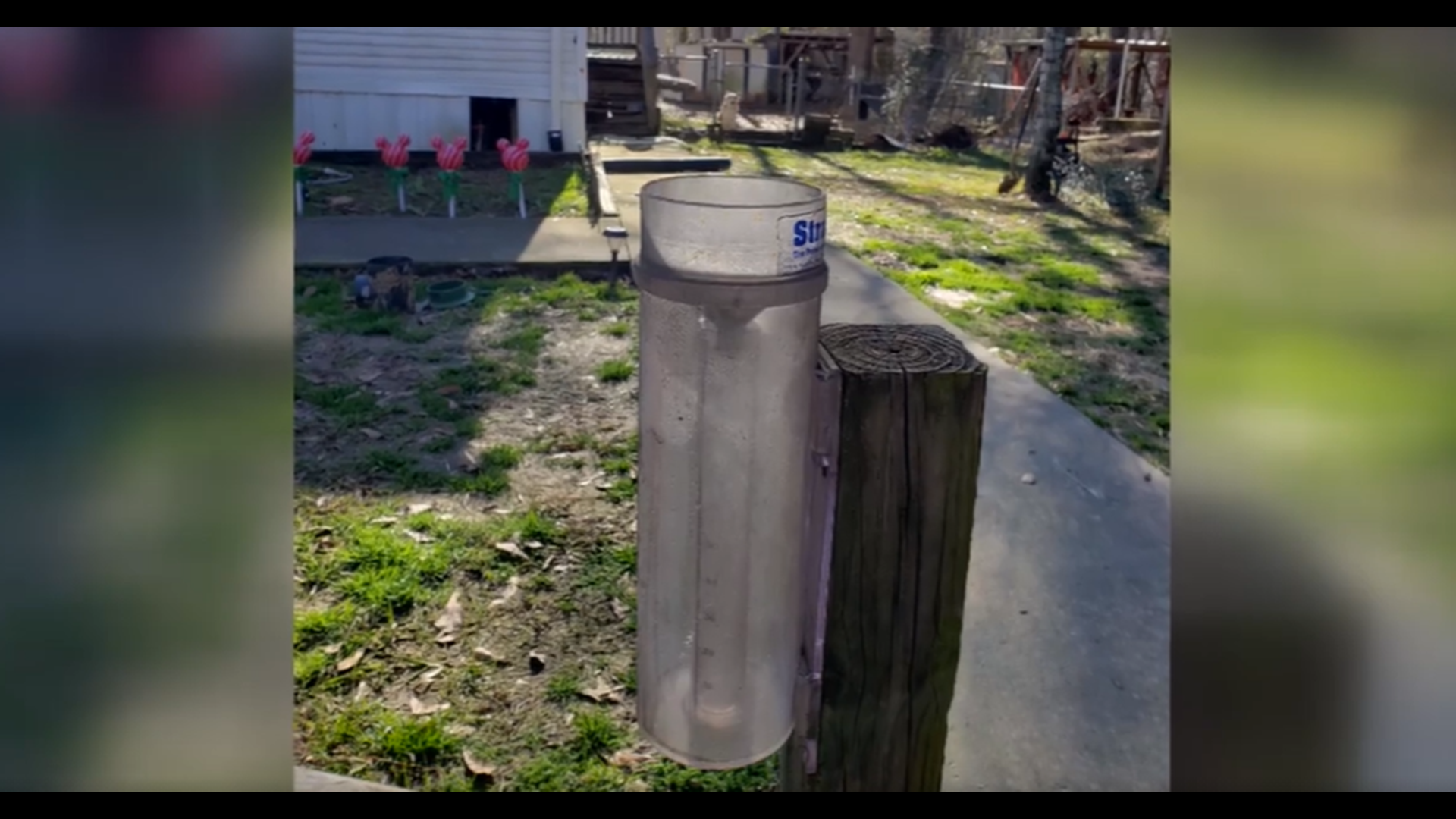COLUMBIA, S.C. — Every day, a group of volunteer weather observers take precipitation measurements at their home and submit it to the Community Collaborative Rain, Hail, and Snow Network, known as CoCoRaHS. These observations help monitor and track trends in our weather and climate in South Carolina and are used by the State Climatologist, National Weather Service, and other state organizations in South Carolina and across the country.
CoCoRaHS was founded in 1998 with the Colorado Climate Center at Colorado State University and has expanded since. South Carolina joined the network in 2008.
According to South Carolina State Climatologist Hope Mizzell, there are about 400 volunteer weather observers in South Carolina, but we are in need of more observers across the state.
"We all know how variable precipitation can be," Mizzell tells News 19. "It may be raining at your house but 6 miles away no one's getting any rain... we actually, ideally would love to have a weather observer every 6 square miles."
There are no special requirements to becoming an observer for CoCoRaHS. Anyone can sign up on the website, https://www.cocorahs.org. After that, one must purchase the official rain gauge, watch an online training video, and then can start providing daily observations from their home.
Mizzell says they have observers as young as 5, with the help of their parents, to as old as 90 plus. The network is also a great opportunity for schools looking to gain more hands-on weather and science experiences or anyone looking for volunteer opportunities.
It is easy to take the observations and only takes about 5 minutes of time. Once you record the amount of precipitation in your gauge, a reporter submits it either on the CoCoRaHS website or on an app on their phone.
Mark Johnston is a member of the WLTX Weather Watchers and an observer for CoCoRaHS in Richland County. He tells News 19 he has always been interested in weather and wanted to help in the reporting and observing of weather in any way he could.


"One of the biggest things is to verify on the ground what the technology is showing," Johnston explains to News 19. "You know as good as the radars are and what they're showing and how intense things are, you can't be on the ground, here's what happened really."

